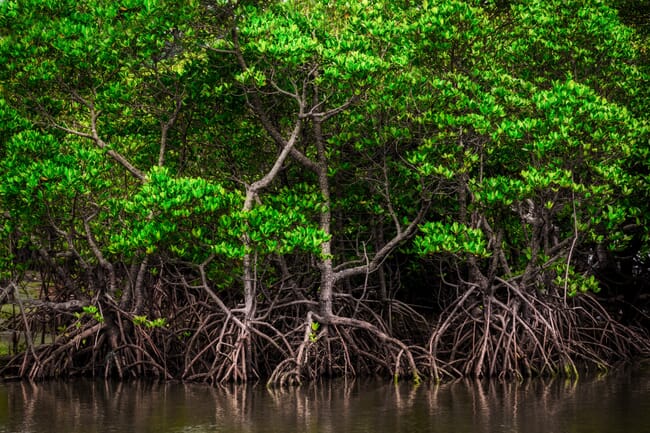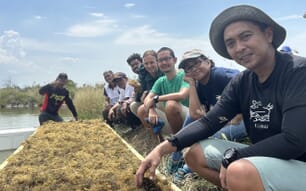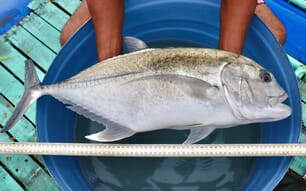The project is part of the Shrimp – Forest farming model, and is being implement in the coastal districts of Cầu Ngang, Châu Thành and Trà Cú, and Duyên Hải in Southern Vietnam. The area boasts a large coastline and has led the country’s aquaculture development, but ongoing threats from climate change and disease risks from intensive shrimp production have spurred a change in farming strategy.

Under the model, black tiger shrimp are bred under extensive farming methods eat mostly natural food in the mangrove forest. According to reporting in The Nation, the shrimp is “clean” and becoming more popular with Vietnamese consumers.
Phạm Thái Bình, a local shrimp farmer in Duyên Hải District’s Long Vĩnh Commune has bred shrimp in a three-hectare mangrove forest for nearly 20 years and has posted average profits of around $4,300 a year. Though his margins are not as high as they would be with industrial breeding, he says that the income is stable.
“The Shrimp – Forest farming model is a sustainable livelihood as it reduces the risk of shrimp disease,” he said.
Provincial authorities are encouraging intensive and super-intensive shrimp breeders with modest finances to switch to the Shrimp – Forest model, saying that it could provide more stable incomes for small producers.




